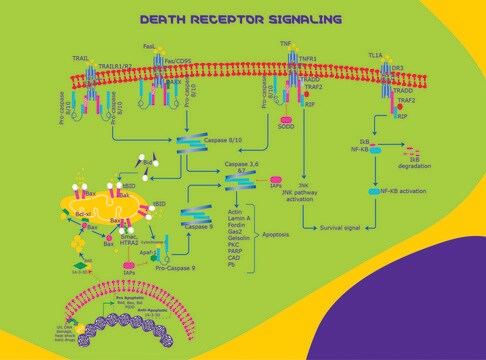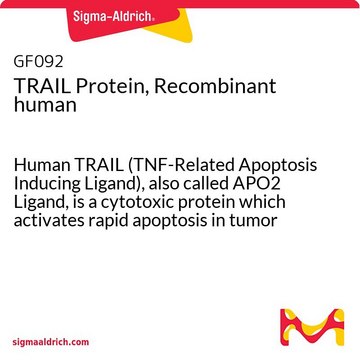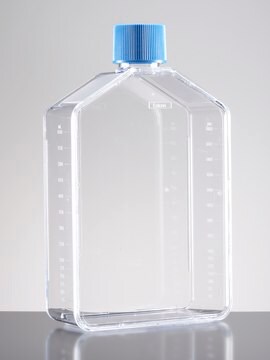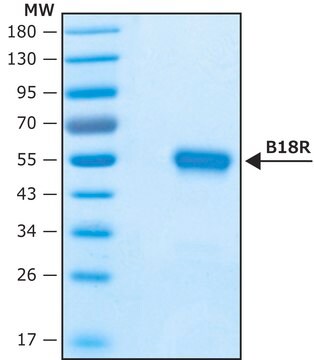SRP6238
TRAIL murine
recombinant, expressed in E. coli, ≥95% (SDS-PAGE)
Synonim(y):
Apo2 Ligand, TL2, TNF-related apoptosis-inducing Ligand, TNFSF10
About This Item
Polecane produkty
pochodzenie biologiczne
rat
rekombinowane
expressed in E. coli
Próba
≥95% (SDS-PAGE)
Formularz
lyophilized powder
masa cząsteczkowa
20 kDa
opakowanie
pkg of 10 μg
pkg of 50 μg
zanieczyszczenia
<1 EU/μg endotoxin (LAL test)
numer dostępu UniProt
Warunki transportu
wet ice
temp. przechowywania
−20°C
informacje o genach
mouse ... TRAIL(22035)
Opis ogólny
Postać fizyczna
Rekonstytucja
Kod klasy składowania
11 - Combustible Solids
Klasa zagrożenia wodnego (WGK)
WGK 1
Temperatura zapłonu (°F)
Not applicable
Temperatura zapłonu (°C)
Not applicable
Wybierz jedną z najnowszych wersji:
Certyfikaty analizy (CoA)
Przepraszamy, ale COA dla tego produktu nie jest aktualnie dostępny online.
Proszę o kontakt, jeśli potrzebna jest pomoc Obsługa Klienta
Masz już ten produkt?
Dokumenty związane z niedawno zakupionymi produktami zostały zamieszczone w Bibliotece dokumentów.
Nasz zespół naukowców ma doświadczenie we wszystkich obszarach badań, w tym w naukach przyrodniczych, materiałoznawstwie, syntezie chemicznej, chromatografii, analityce i wielu innych dziedzinach.
Skontaktuj się z zespołem ds. pomocy technicznej







